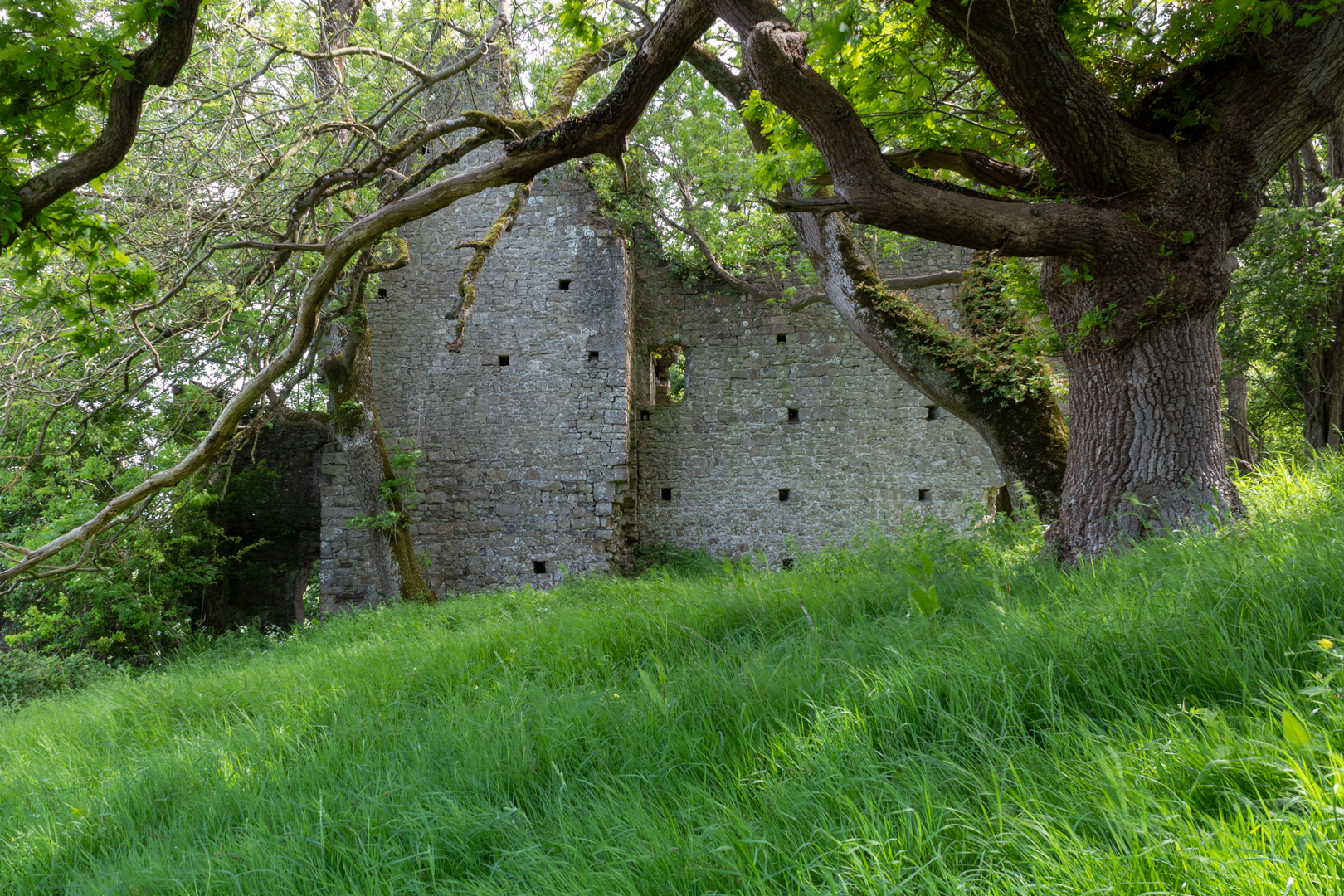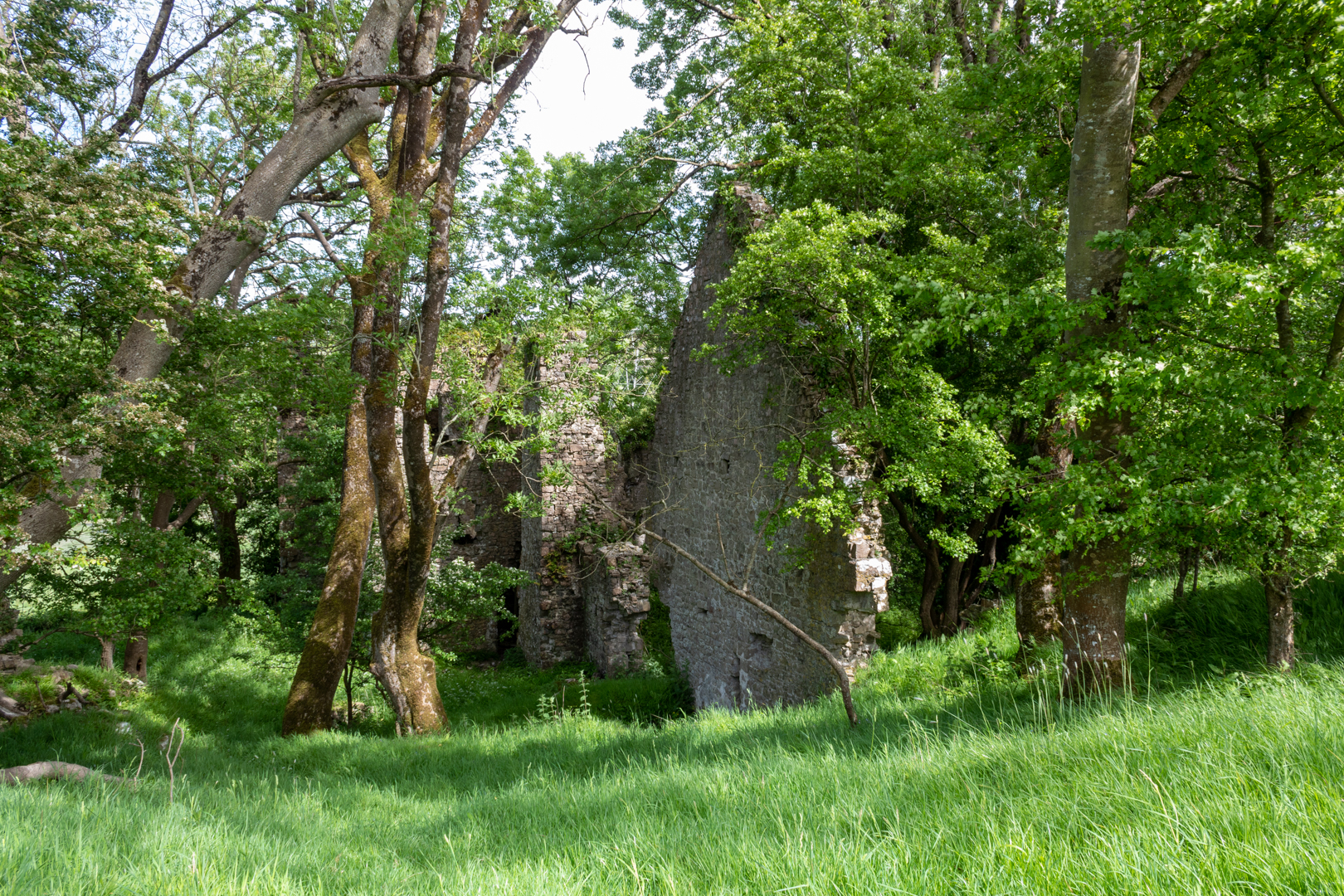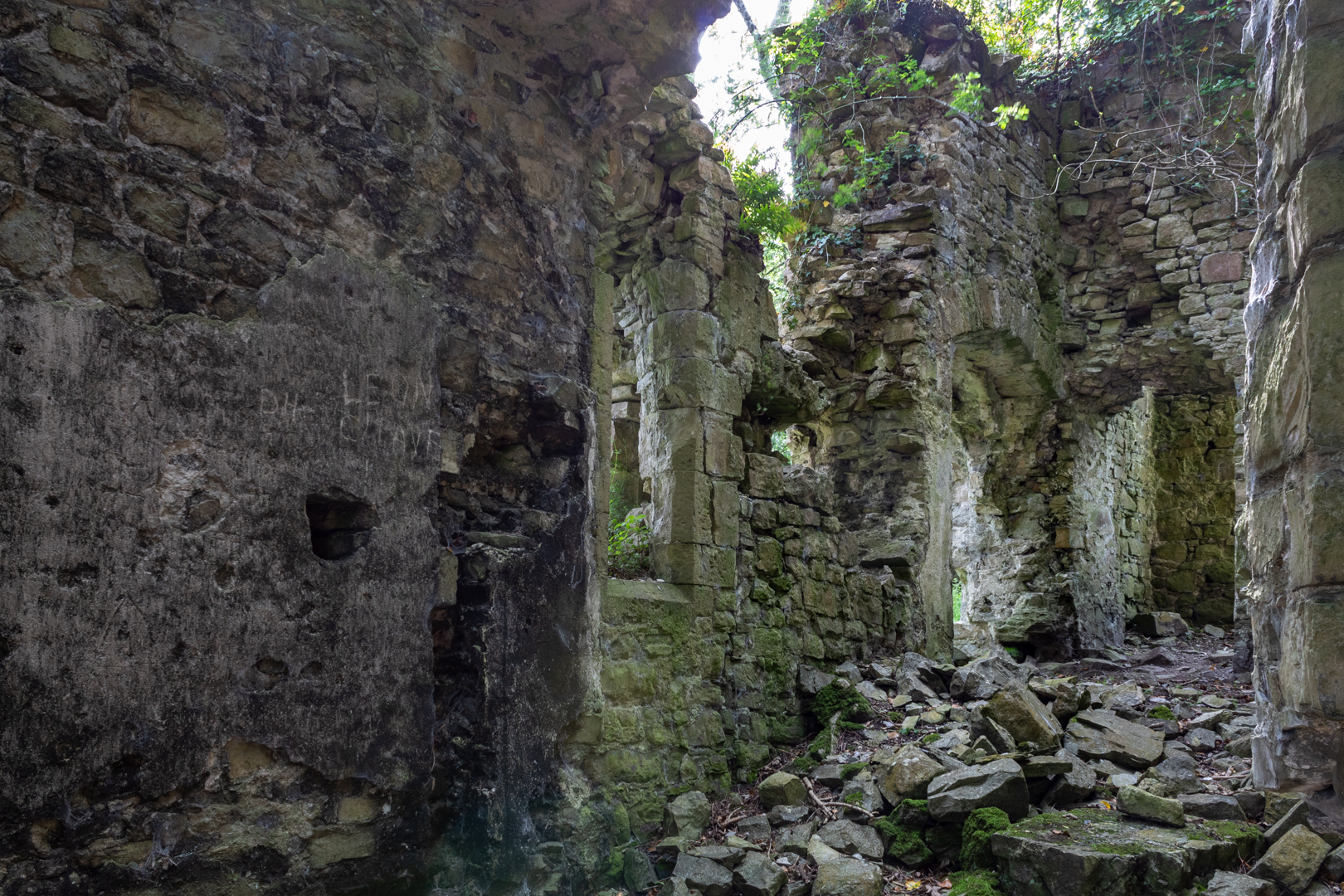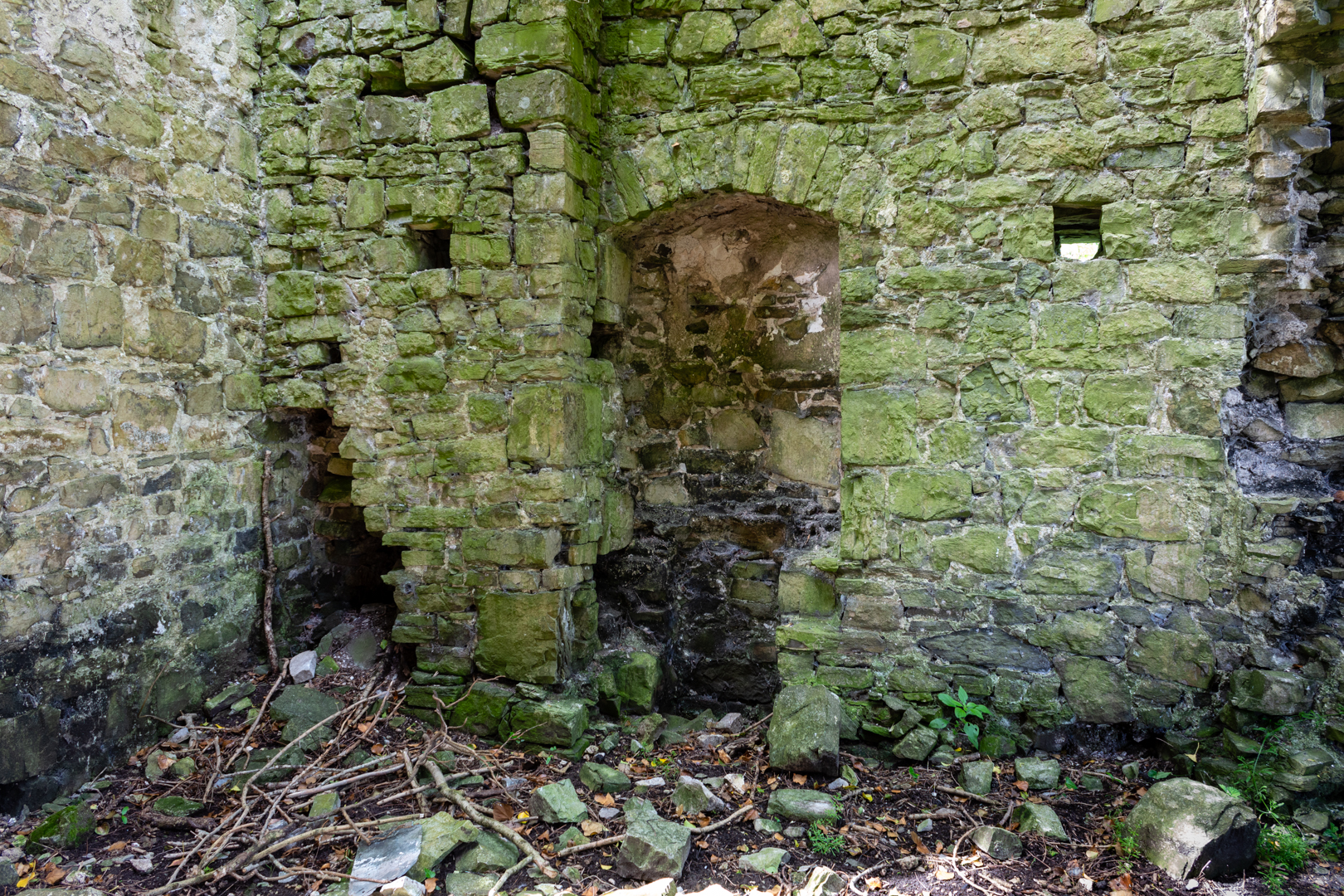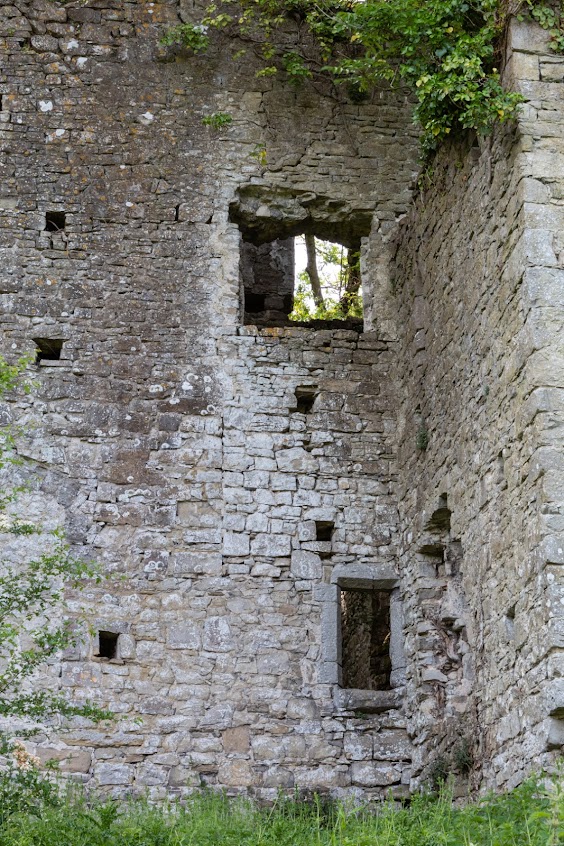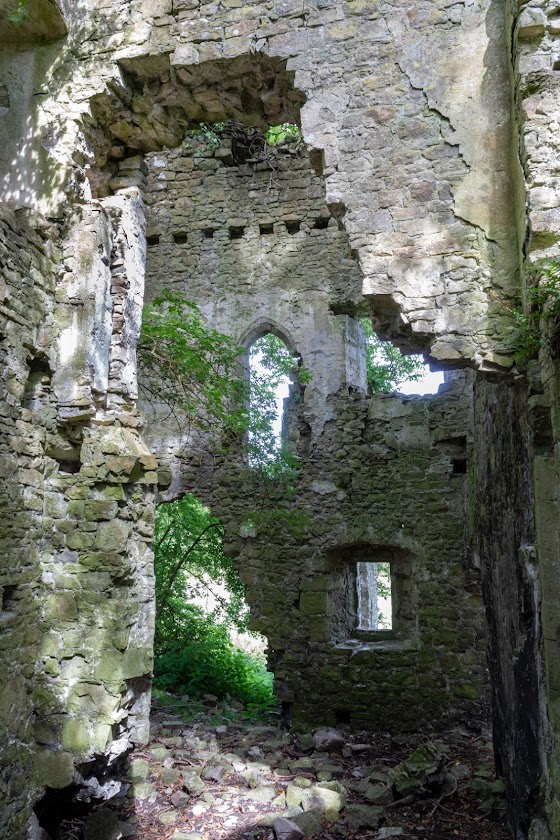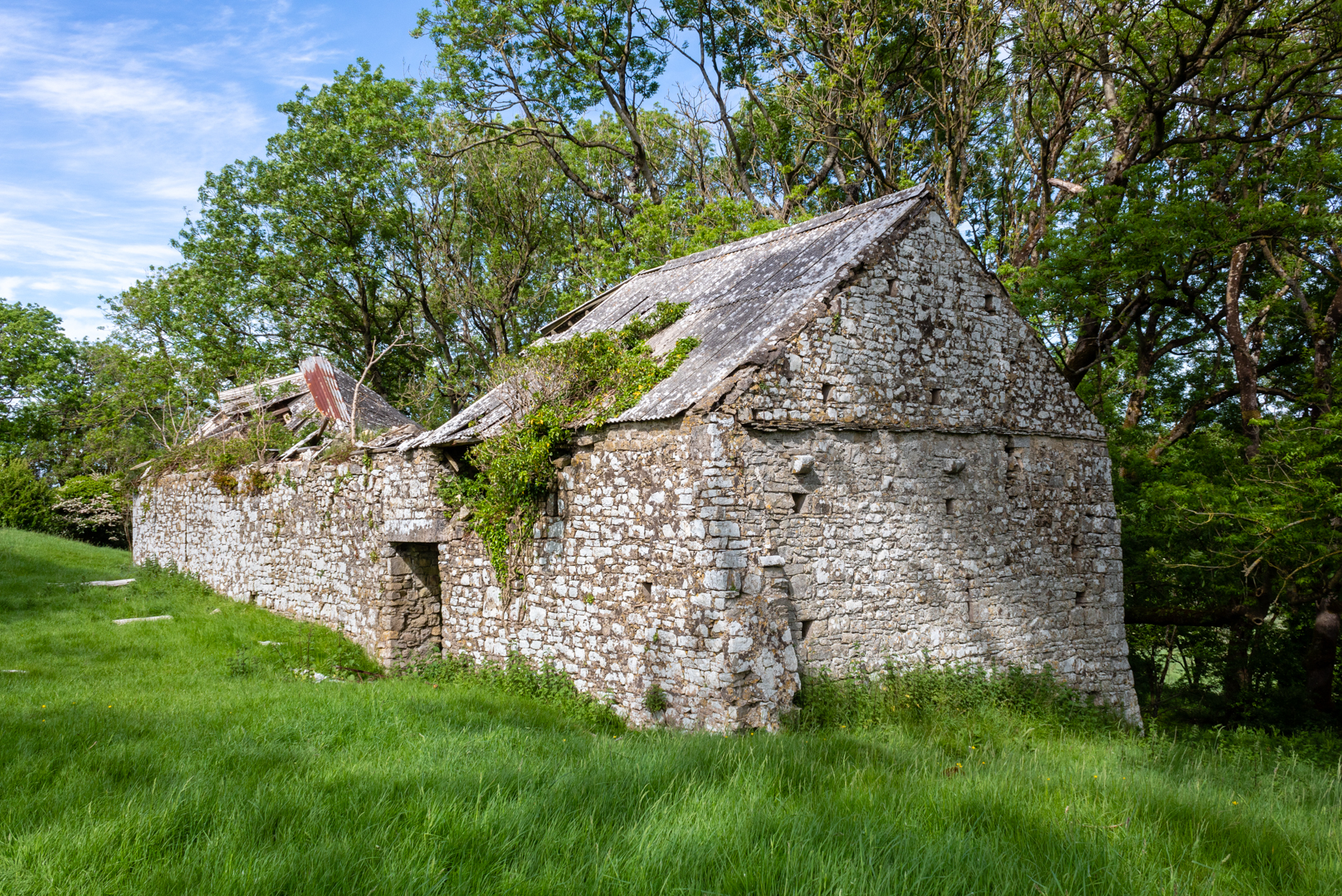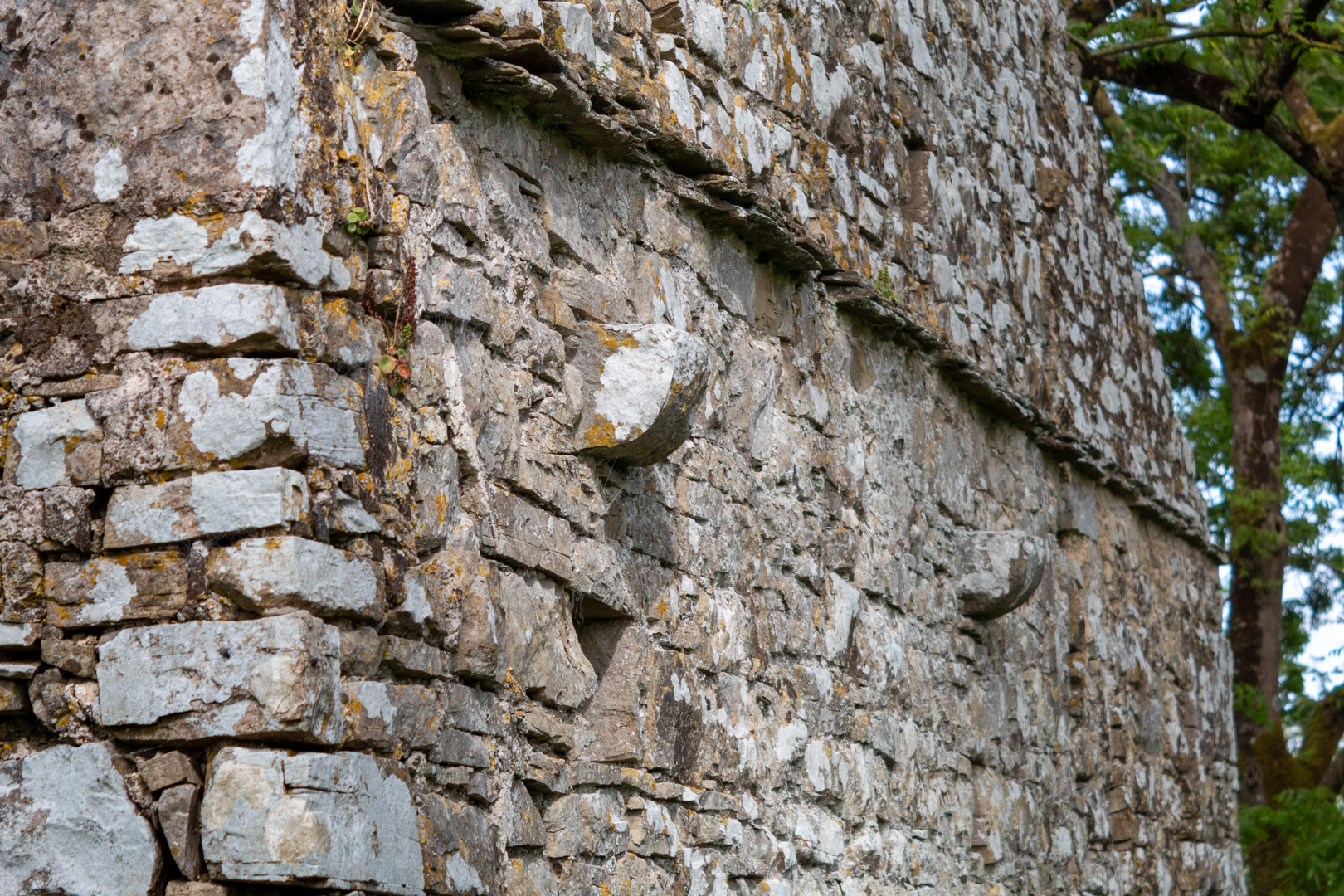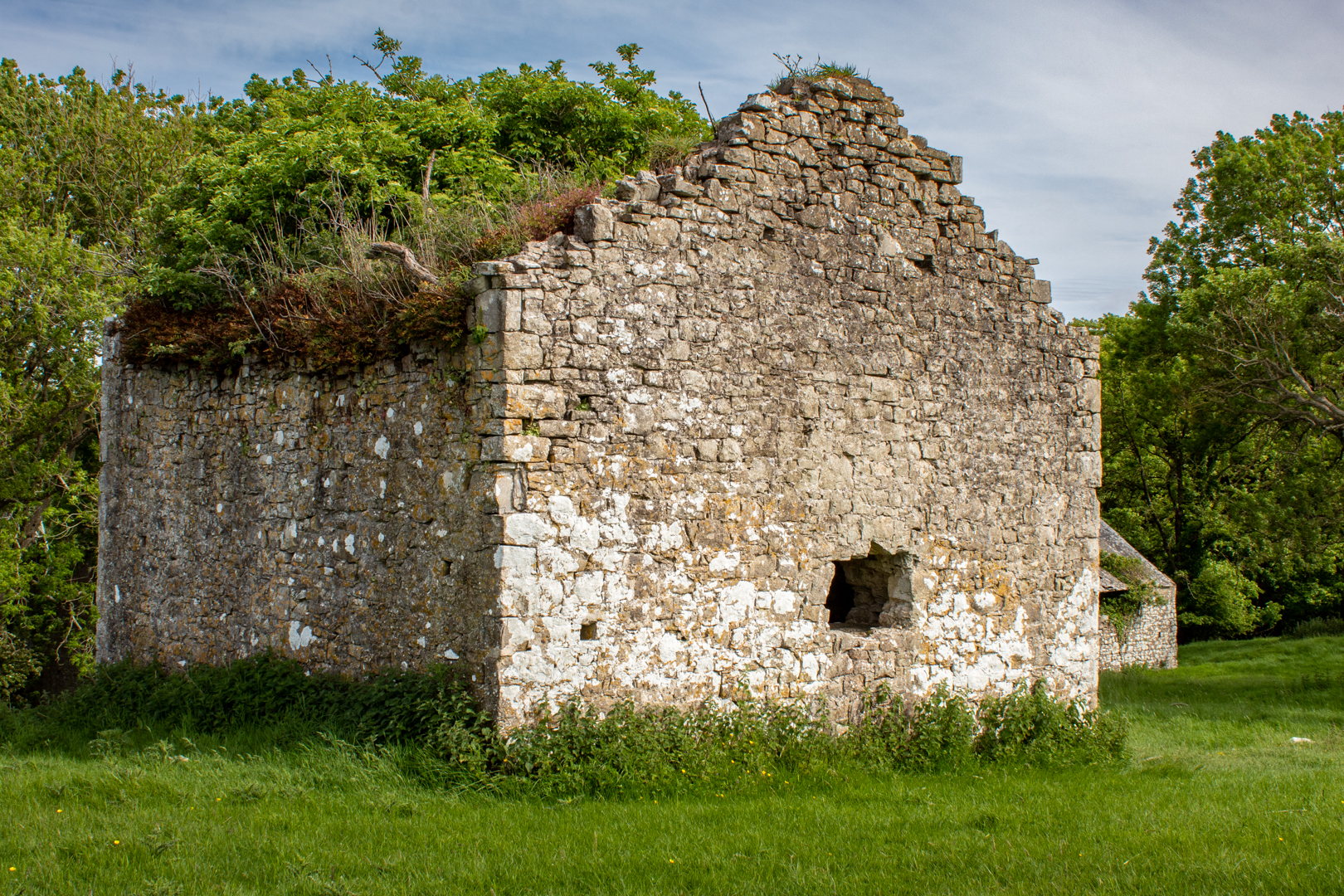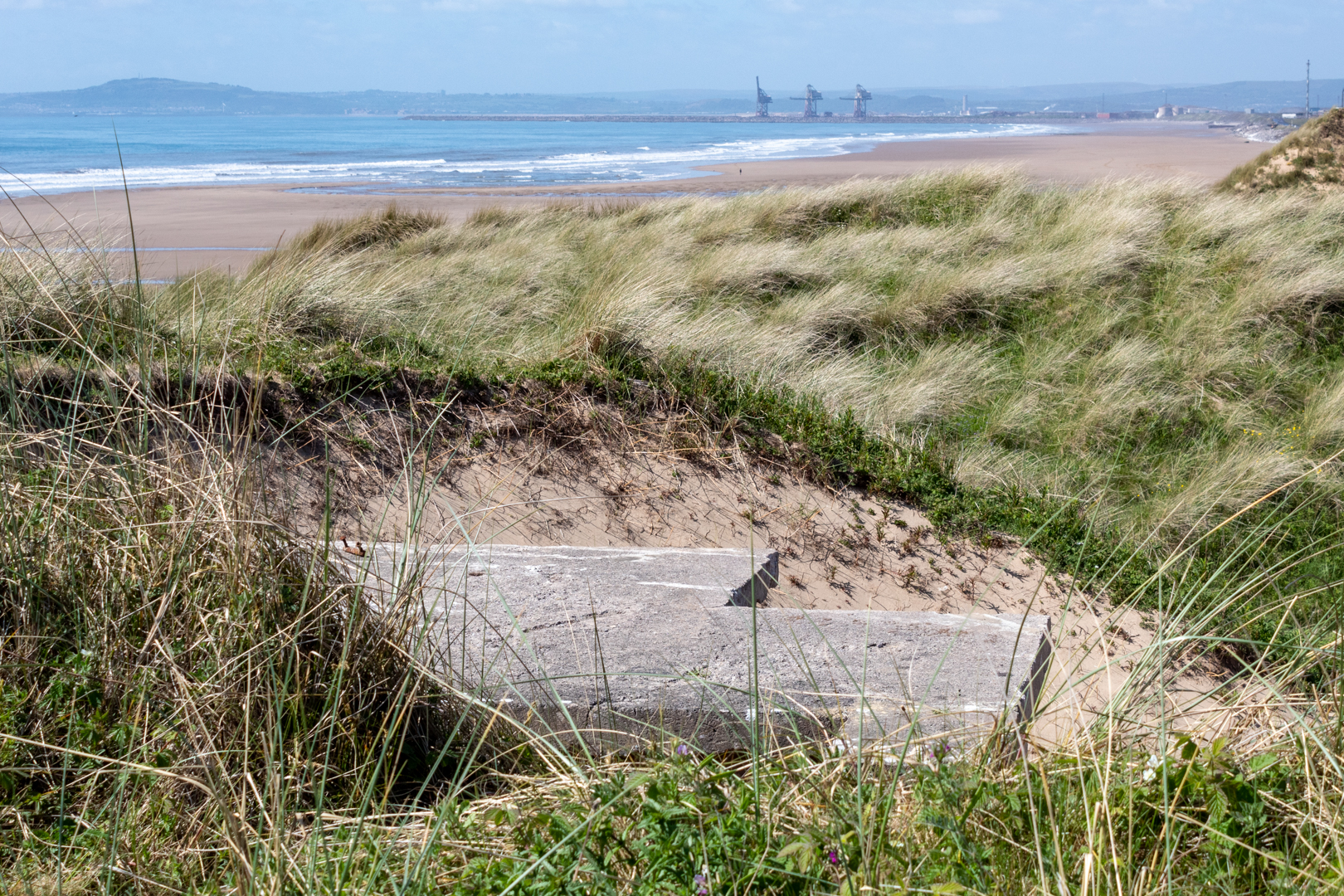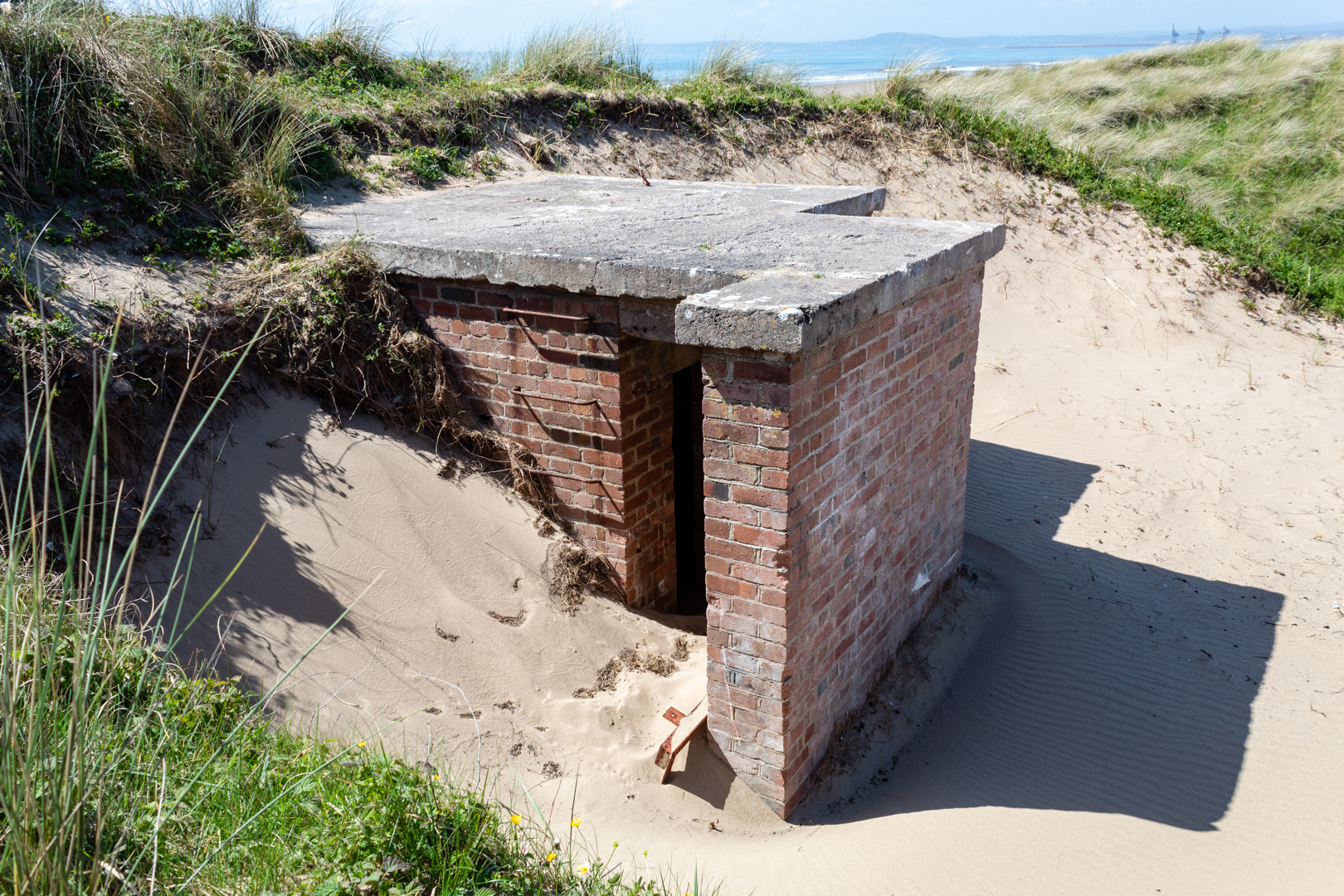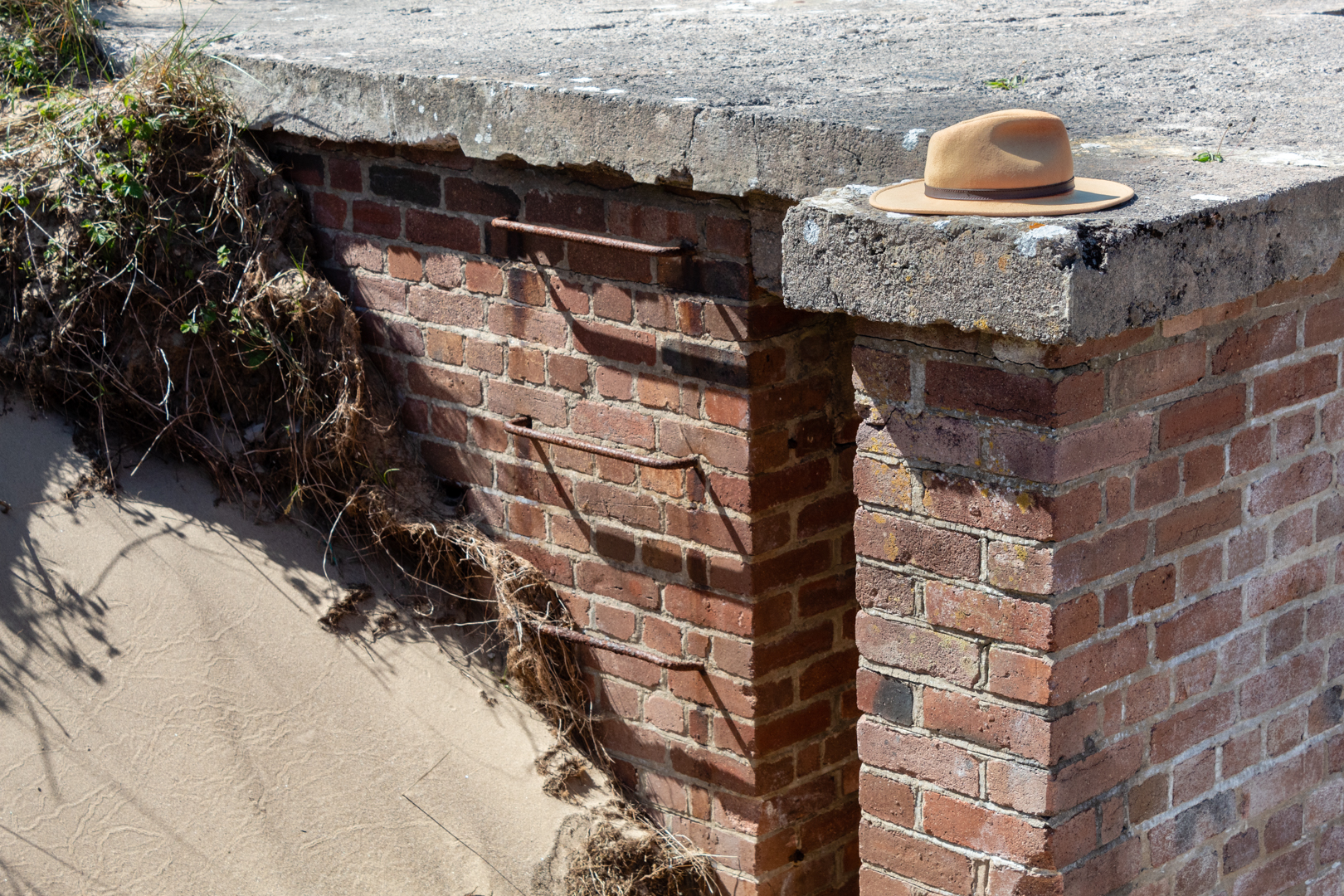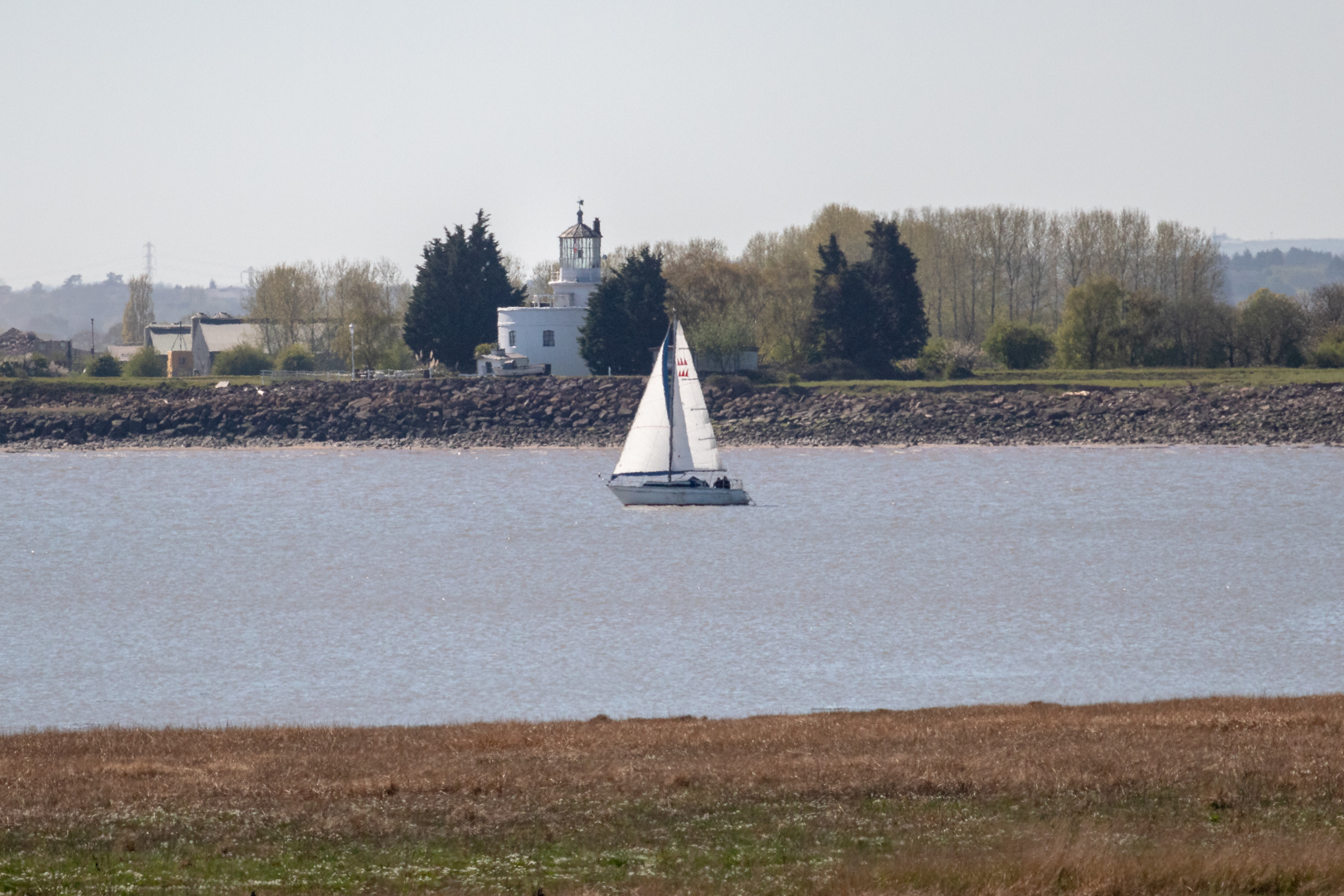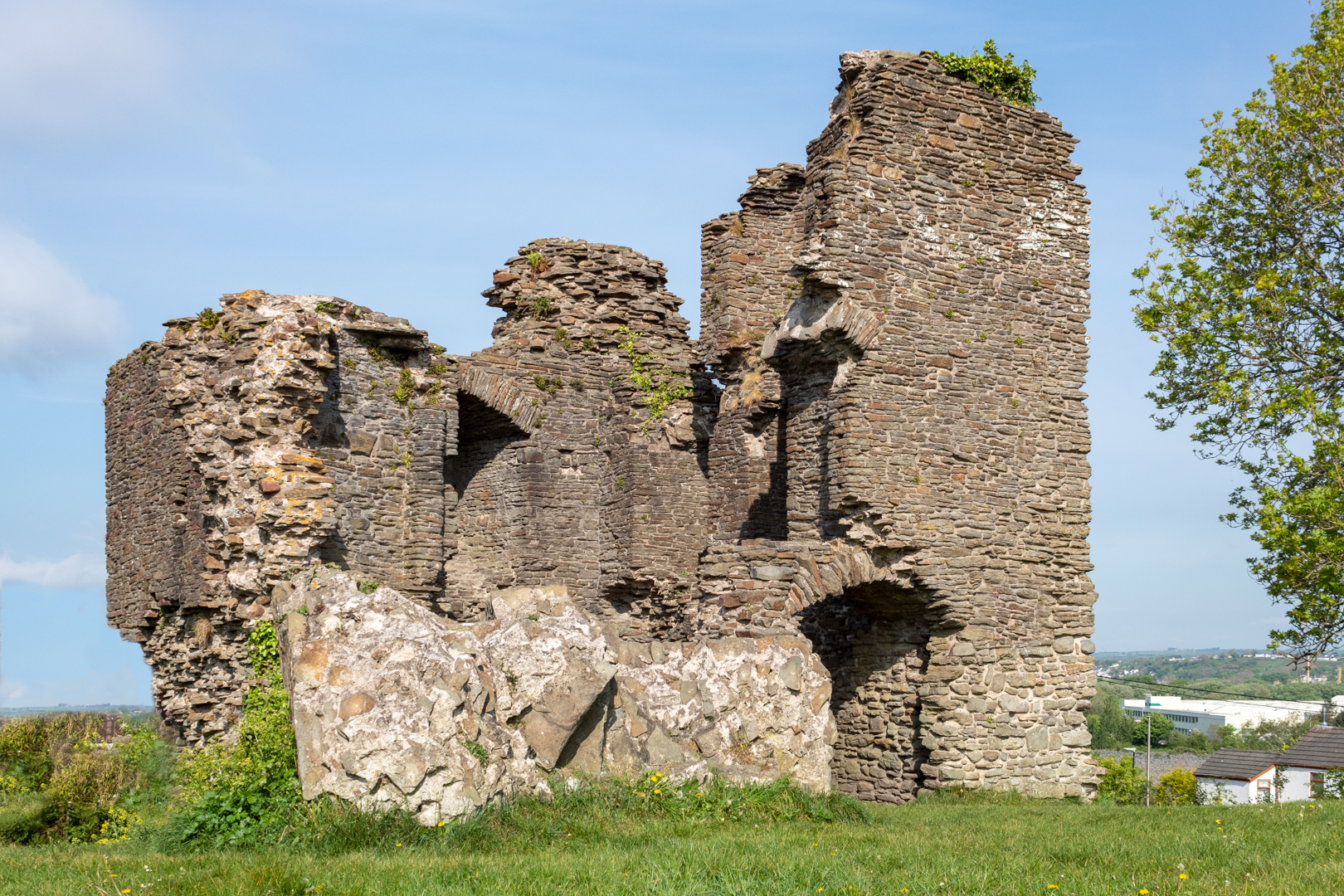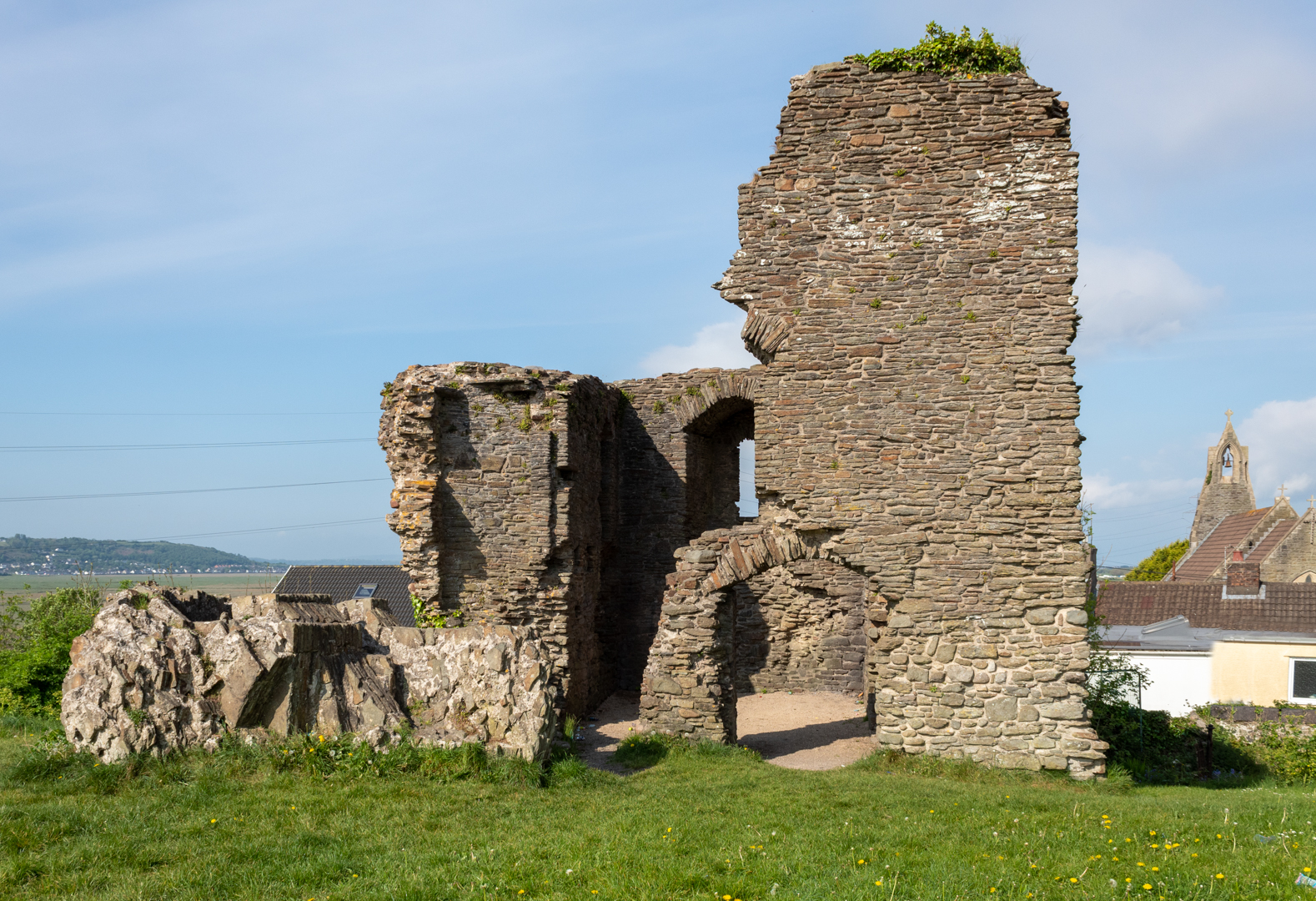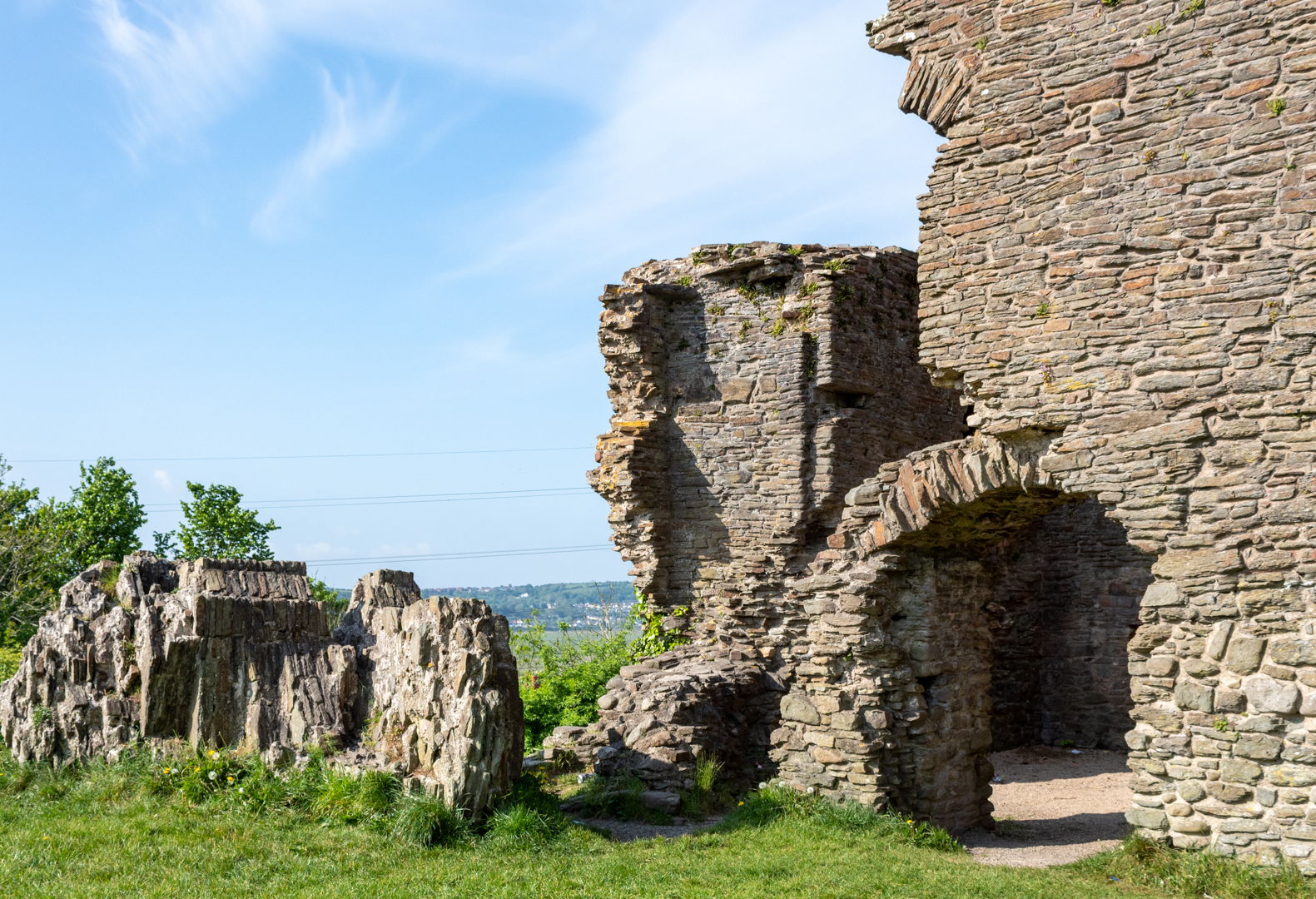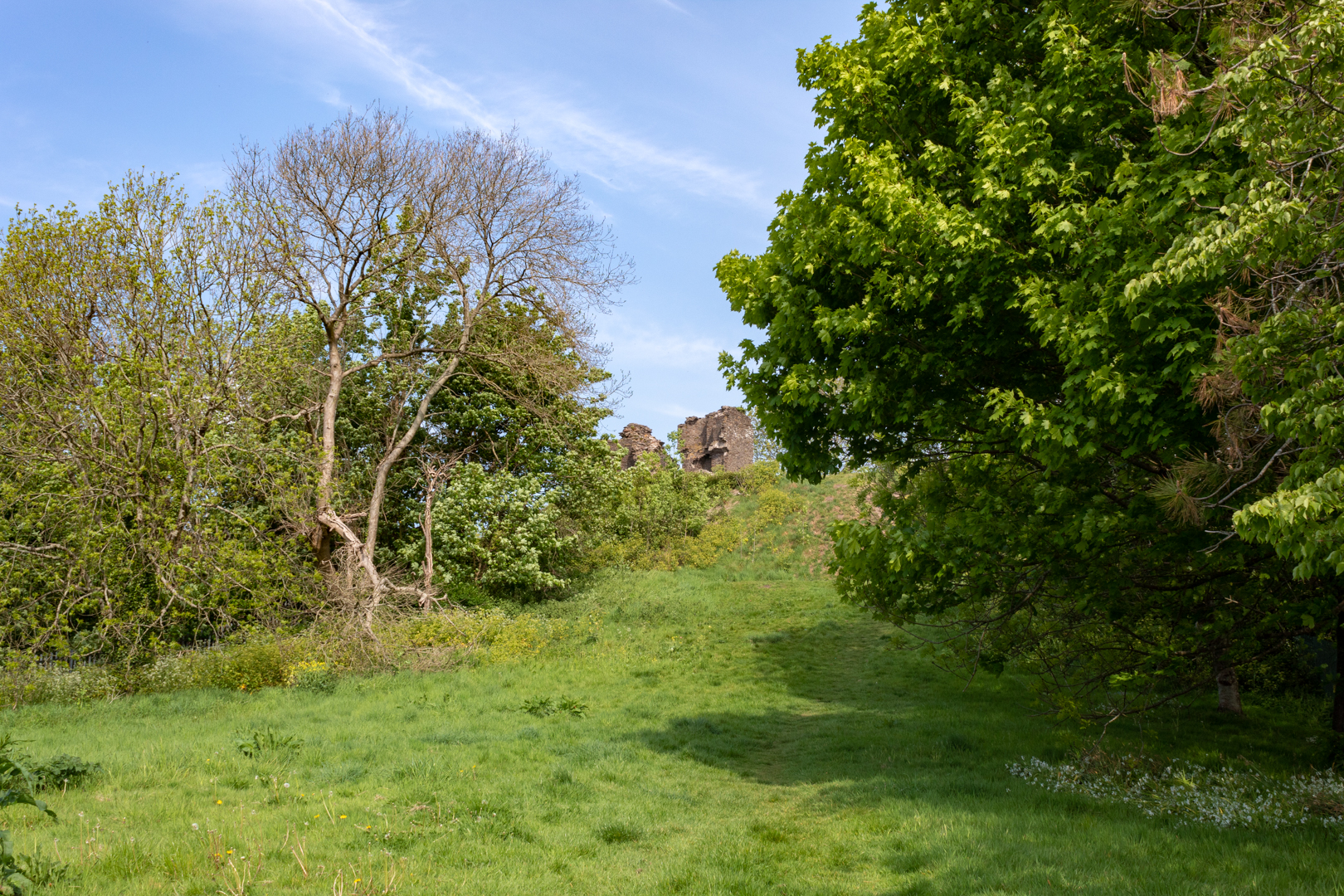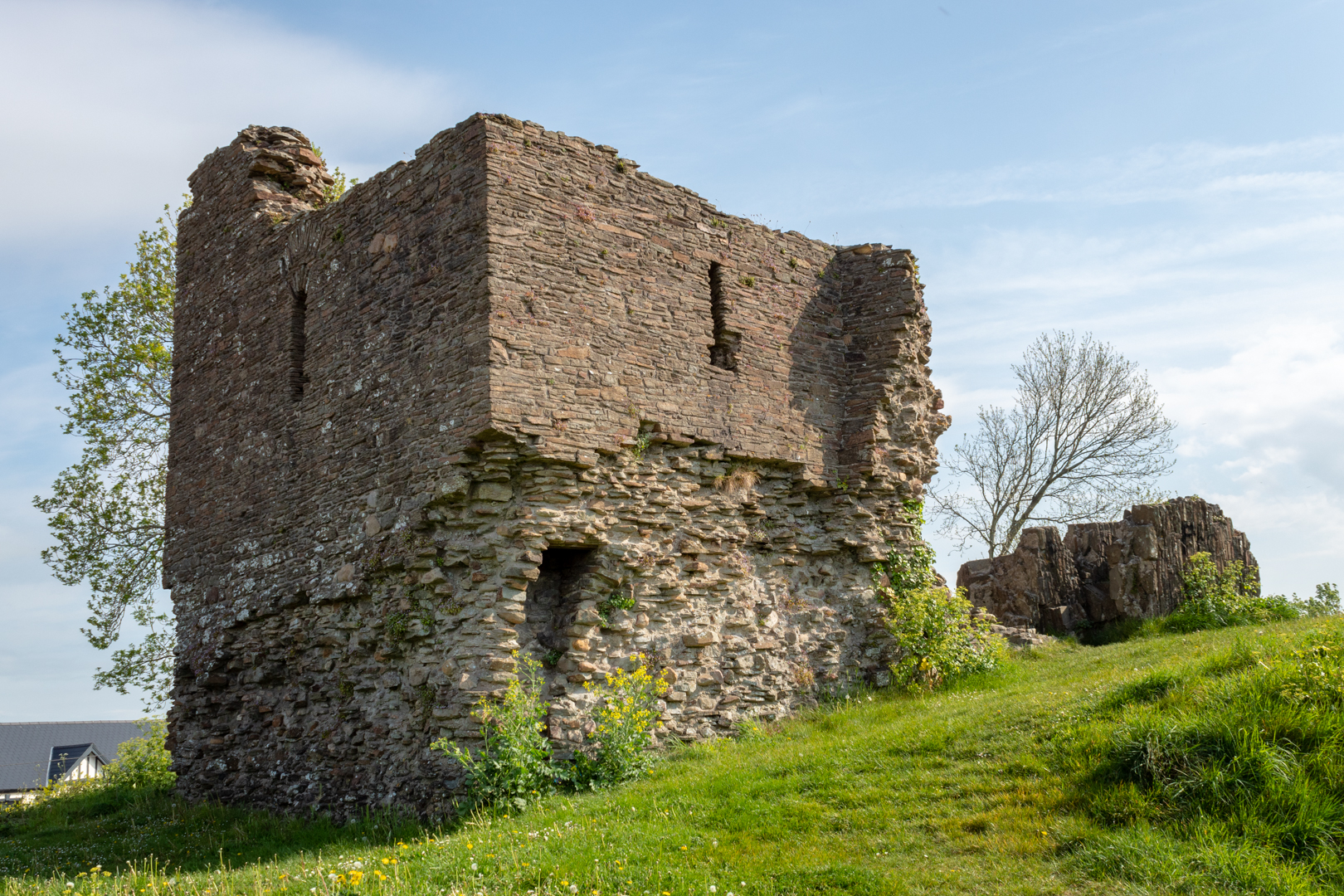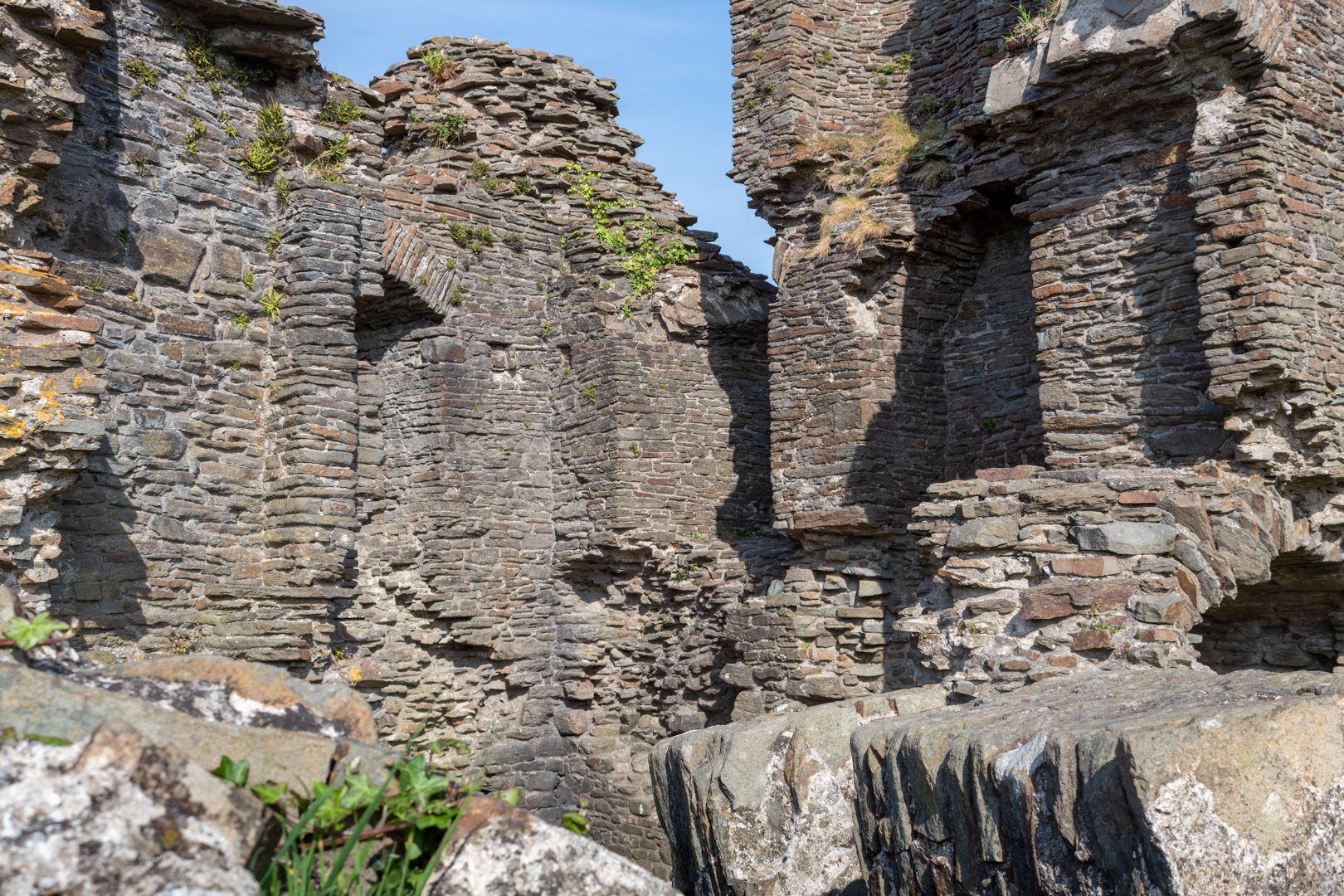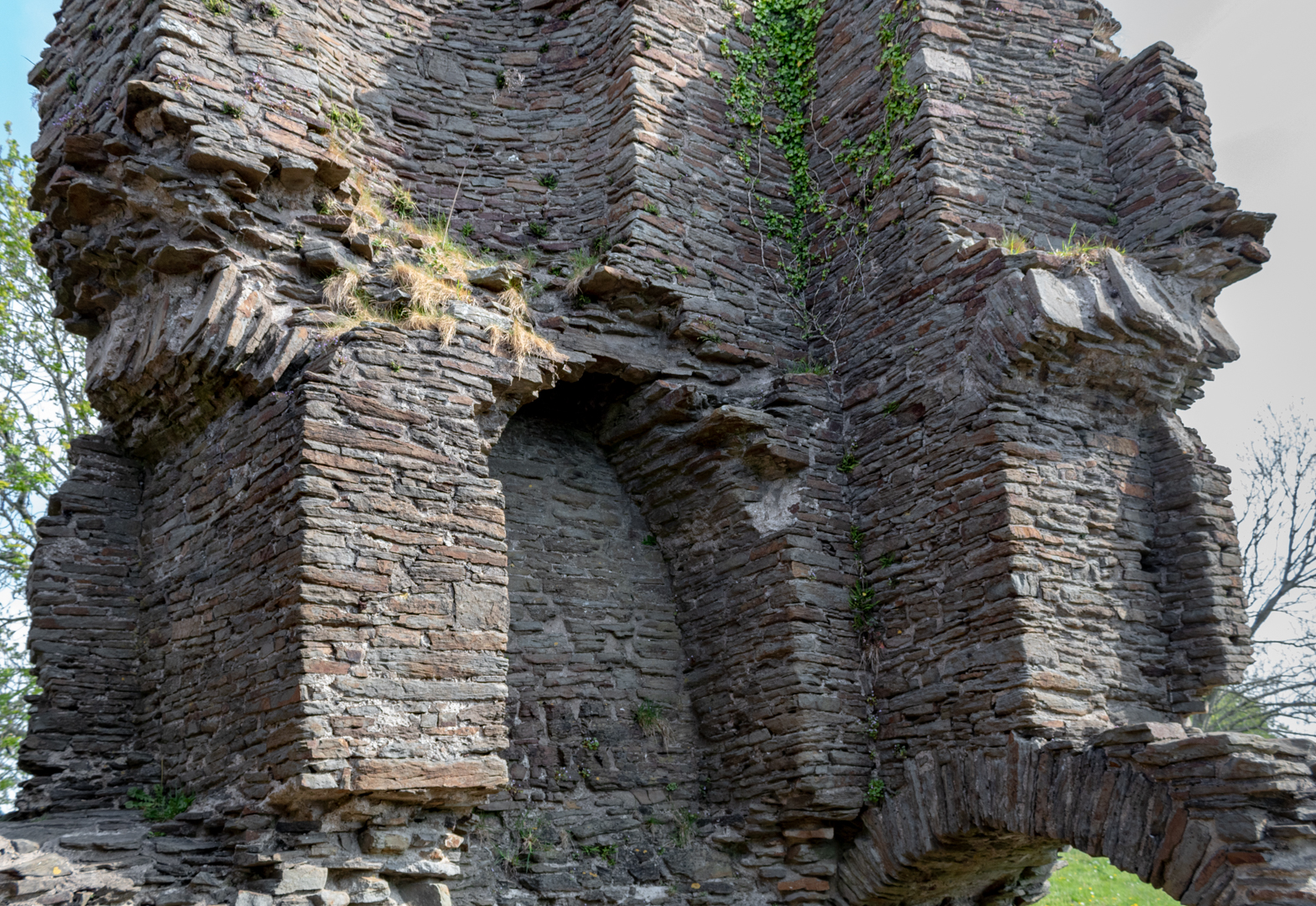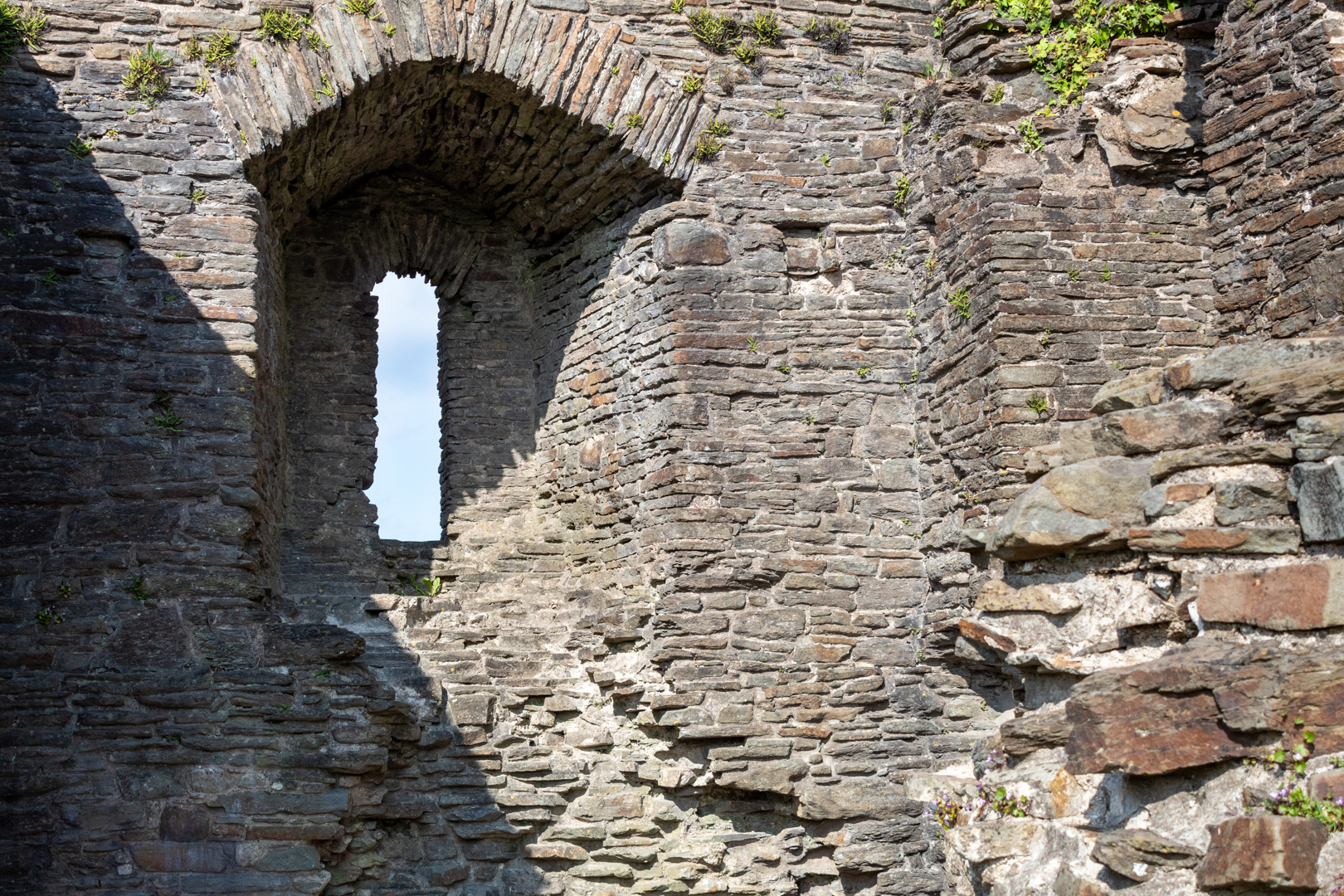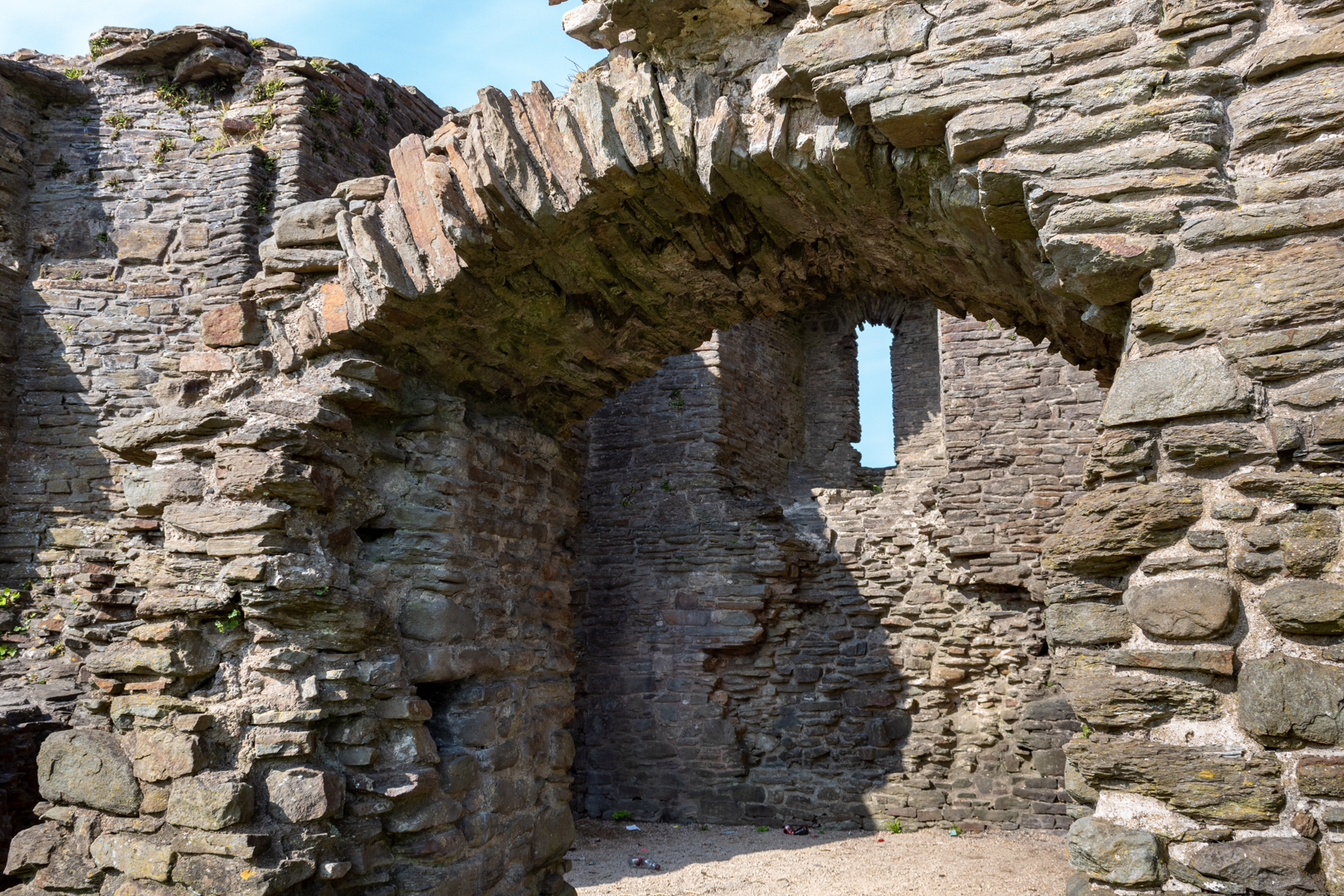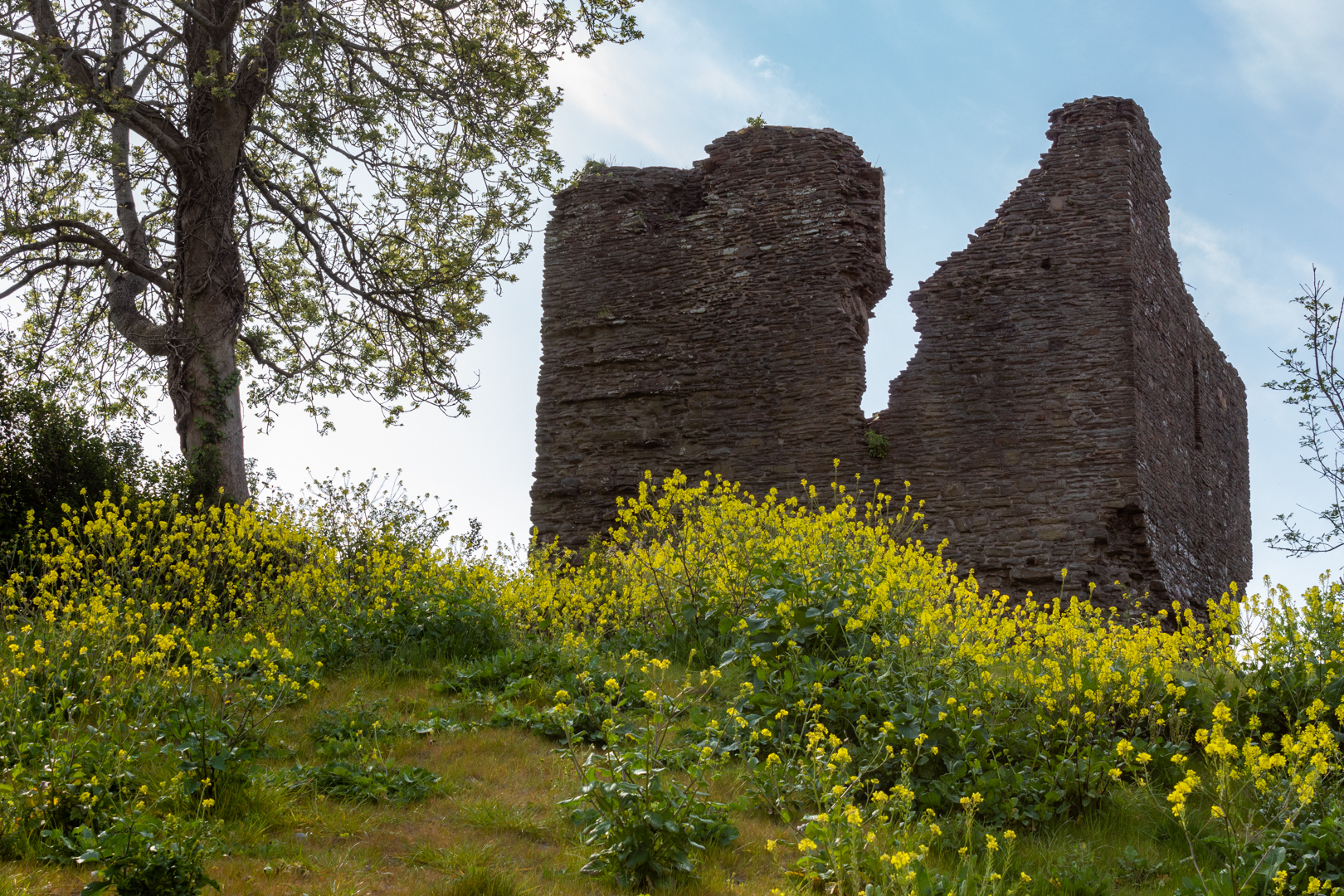Visit Date 05-2022.
St. Athen in South Wales in recent times has been known for the RAF base here where the RAF’s non-aircraft, ground engineering technicians were and still are trained.
The Station officially opened as RAF St. Athan on 1 September 1938.
More recently, St. Athen has become base for the manufacture of the high-class Aston Martin SUV. Conversion of the three super hangars have been redeveloped into a state-of-the-art manufacturing facility.
My interest here, however, goes back many hundreds of years before this.
We go back to the 11th Century for this story.
Two Orchards were laid here. Both the orchards were built by the Berkerolles who received the land from Robert Fitzhammon after the conquest of Glamorgan in 1091.
In one of the orchards, we find East Orchard Castle now a ruined building whose remains date mainly from the 14th century.
While it is named a castle, I suppose it would be classed as a fortified manor house however despite this it was not fortified in the style of one and is officially classed as post-medieval and broadly defined as a domestic manor house dwelling.
It has been in ruins since the late 18th century, the house having been dismantled from 1756.
While East Orchard is one of the mysterious ruins in the Vale. It must have been a substantial building. It had a chapel, a barn and a dovecote.
In the main manor house you can still see some of the features like the fireplaces and windows.
The layout and style would seen to confirm the mansion was entirely residential rather than defensive.
The manor looks like it may have been a two-story or even three story house.
An earlier structure on this site was destroyed in 1316 during a revolt led by Welsh leader Llywelyn Bren, but the residence was soon rebuilt.
The mansion was constructed for the Berkerolles family who had been resident in this part of Glamorgan since shortly after the Norman conquest, though much of their history is unclear.
The Berkerolles were subsidiary to the Lords of St Athan, and they occupied the mansion until the early 1400s when the house passed by marriage to the Stradling family from St Donats.
 |
| The Barn/Outbuilding and Dovecote |
The Stradling family endured for several centuries and carried out various improvements to the buildings. The castle was sold in 1756 but then soon abandoned and partially dismantled, and has been ruinous for over 300 years.
 |
| The chapel in ruins (left) |
The three main structures outside the manor house, the Chapel, Barn and outbuilding can still be seen
The Chapel seen here on the left is in the most ruinous state and none of the features remain but just the remnants of the walls.
However, the barn looks like it has been used as a farm building more recently although now it is also in a poor state.
Although you can see some of the features you would find on a structure of this age.
The dovecote is still standing and looks externally to have stood the test of time better than the other buildings.
You can see internally the box holes are built into the walls where the nesting birds would have been. Not shown here is the massive tree that is now growing through the building.
The manor is mostly surrounded by a belt of woodland, on the west side of the shallow but relatively steep-sided valley of the River Thaw, 1.5 miles from the coast, near St Athan, with further natural protection provided by a tributary valley a short distance north.
Currently, it is a peaceful and tranquil place that is quite easy to get to and is in a very quiet part of St. Athen.
Footer:
Visit Information:-
Google Reference
51.403302827696336, -3.3973049137655678
What Three Words reference:-
///roaming.canal.offshore
OS Grid Ref
ST 02899 68068
Additional information.
Visiting is easy but parking near by may not be.
There is a small pull in lay-by (51.39926230839226, -3.397730966275135) but this is part of an maintenance access road. It should be ok at the weekends but please take care.
Alternatively St. Athen Village (1 mile away) or at Four Cross Station (Petrol Garage) about 500 yards away.
Once at the lay-by there is a walkway just past the eastern end of the Lay-by walk up the steps and over the style (this is an official "marked" pathway).
Enter the field on the left of the stile and keep forward along the hedge, past the old pillbox and to the top right hand side of the field. Here there is a style although the step part was broken. After this stick to the path for 5 minutes and the Castle will come into view.
BTW Google maps directions do not take you this way but this is by far the best way (the OS app is better here)
If you would like more information on this location please feel free to contact me.

